原地址:
https://research.computing.yale.edu/sites/default/files/files/mpi4py.pdf
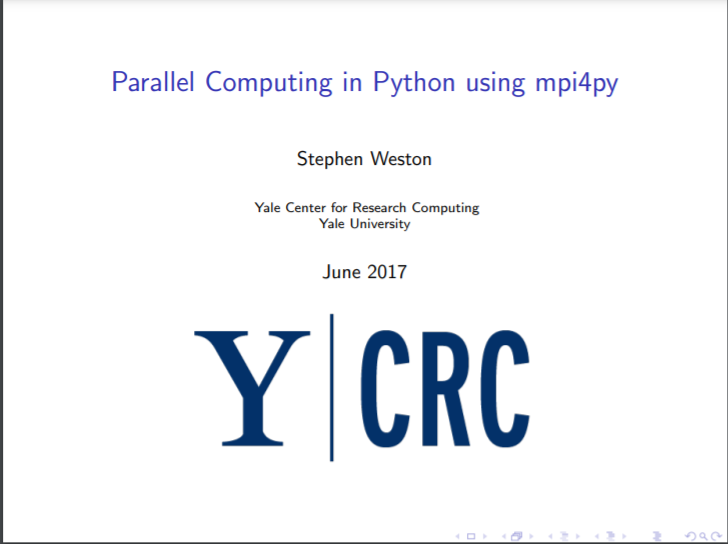
=============================================
说明:
本文只摘录了部分因为比较重点的部分内容,如要查阅全部请关注原地址:
https://research.computing.yale.edu/sites/default/files/files/mpi4py.pdf
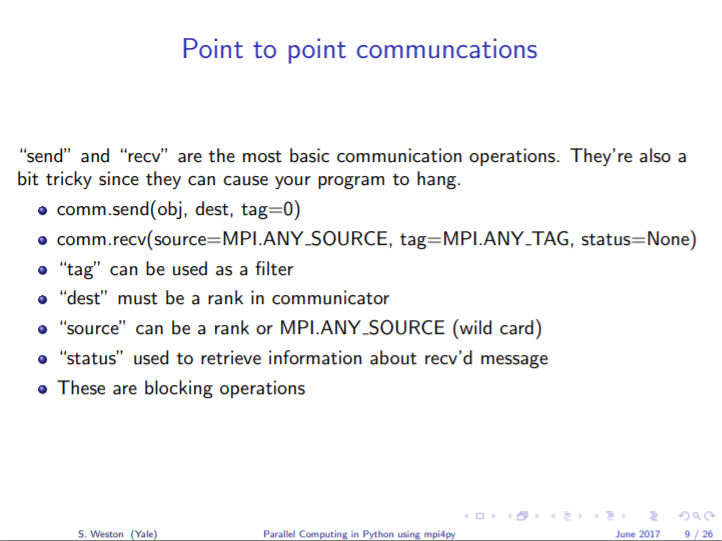
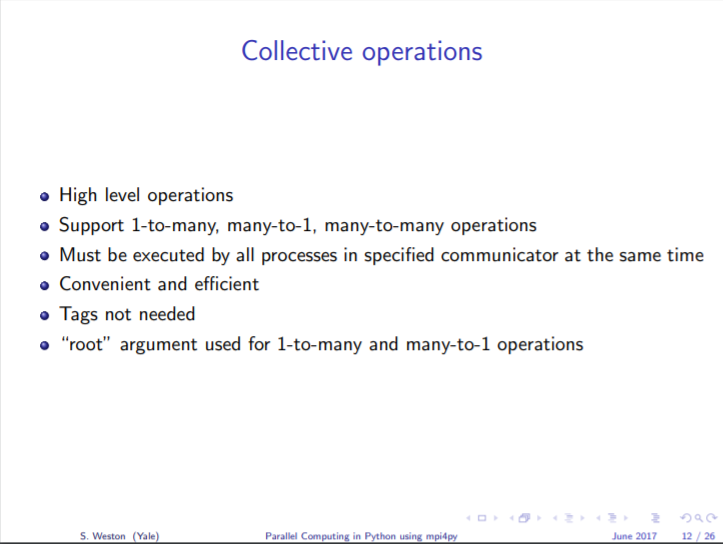
感觉效果比较好的就是下面的对通信的集合操作的图解,刚一看比较懵,细一看发现还比较形象。
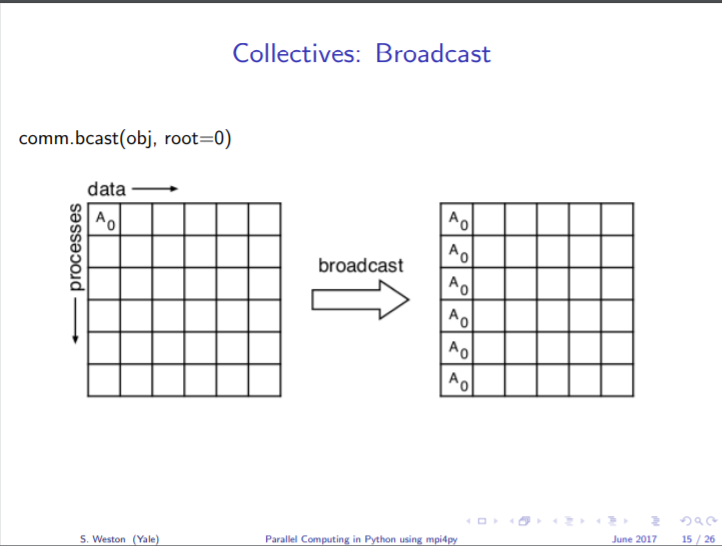
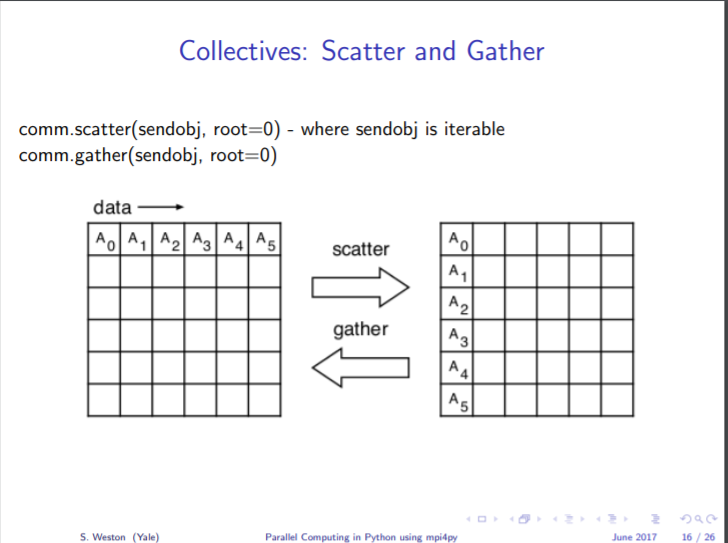


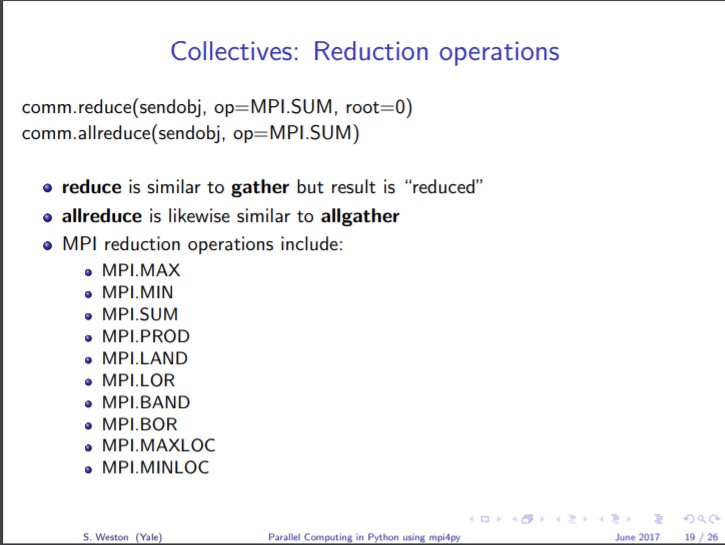
=====================================================
示例代码:
import numpy as np from mpi4py import MPI def rbind(comm, x): return np.vstack(comm.allgather(x)) comm = MPI.COMM_WORLD x = np.arange(4, dtype=np.int) * comm.Get_rank() a = rbind(comm, x) print(a)
import numpy as np from mpi4py import MPI def rbind2(comm, x): size = comm.Get_size() m = np.zeros((size, len(x)), dtype=np.int) comm.Allgather([x, MPI.INT], [m, MPI.INT]) return m comm = MPI.COMM_WORLD x = np.arange(4, dtype=np.int) * comm.Get_rank() a = rbind2(comm, x) print(a)
import numpy as np import math from mpi4py import MPI comm = MPI.COMM_WORLD rank = comm.Get_rank() size = comm.Get_size() x = range(20) m = int(math.ceil(float(len(x)) / size)) x_chunk = x[rank*m:(rank+1)*m] r_chunk = map(math.sqrt, x_chunk) r = comm.allreduce(list(r_chunk)) if rank == 0: print(len(r), r)